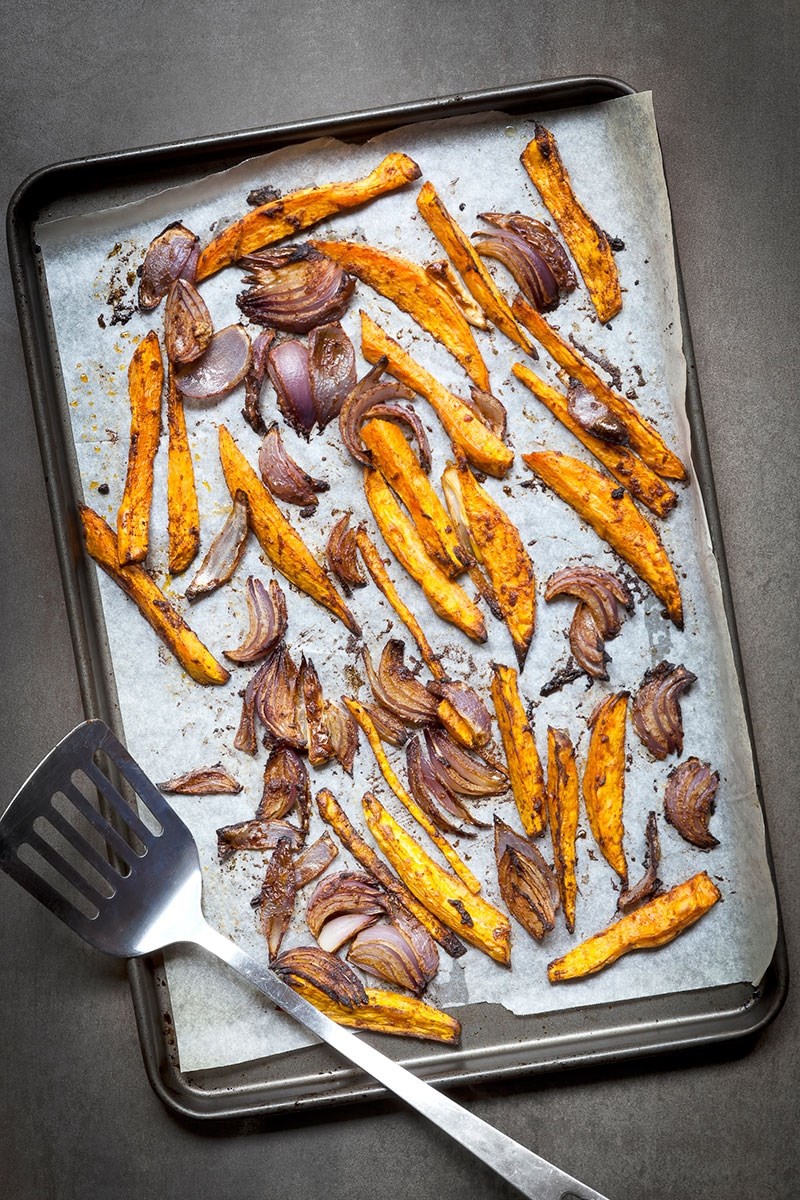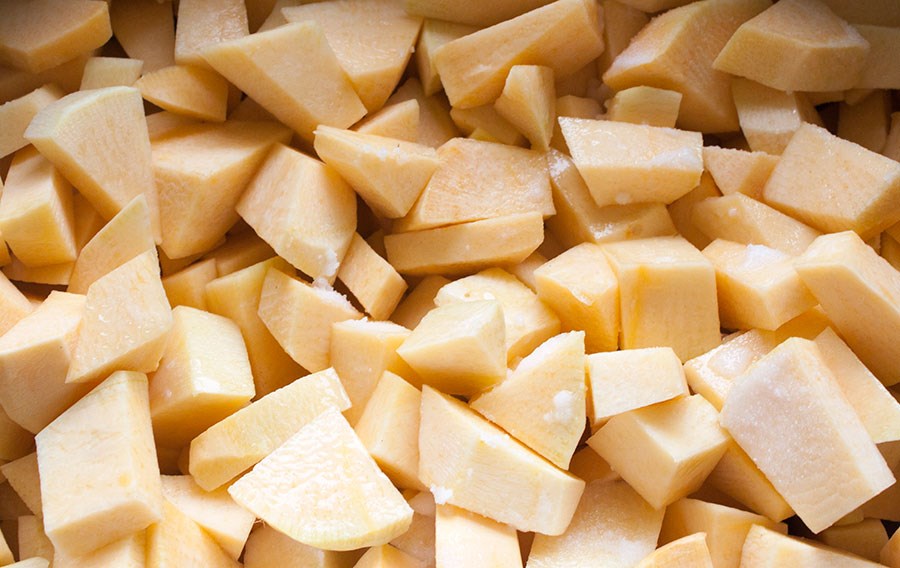Rutabagas are in season, but what the heck are they? This weird, obscure vegetable is alien-like to some of us, and we have no clue what to do with it. It’s not quite a turnip, not quite a beet (actually it’s a cross between a turnip and a cabbage – at least that’s how it originated). And here’s a rutabaga fun fact: only us Westerners call them rutabagas; the rest of the world calls them “swedes.” To make things more confusing, it originated in Bohemia as a hybrid in the 17th century, so naturally we gave it a name that resembles an entirely different country. We’re seriously weird.
Often mistaken for turnips, these partly purple balls of edible joy are actually larger and give off a slightly sweet flavour when roasted, and have a milder flavour than turnips when raw. They also require 90 days to reach full size, and have a bit of a famine-food reputation, as most root veggies do. When times are tough turn to root veggies, be it a zombie apocalypse or just trying to stay on budget. Rutabagas for every meal? I wonder what it would taste like as an ice cream…
So now that we sort of know what it is, how on earth do we cook it? That was definitely a question I had when I first came into contact with the exotic-looking veggie. It also made me think of Shrek. I feel like Shrek would eat rutabagas, er, swedes. You can cook it just like you would a potato: chopped up and broiled or baked, or boiled and mashed in place of your regular potatoes. They also make a great addition to mashed potatoes, giving them a rich sweet flavour.
Here are some more reasons to have a little rutabaga in your life:
Digestive health
Because rutabagas are high in fibre, it helps your digestion by bulking up your stool, avoiding constipation or any other potential intestinal stress. Being able to clear your body out on a regular basis is very important to your digestive and overall health.
Boost your immune system
Because of their high vitamin C content, rutabagas can be added to the immune-boosting foods in your pantry. This water-soluble vitamin is well known for its immune-boosting properties, but it also helps the body form and maintain strong bones, body tissues and blood vessels. It also helps in the absorption of iron and protects against heart disease and, of course, scurvy.
Strong bones
Your bones need an adequate supply of minerals to stay strong and healthy, and rutabagas have you covered for that. They’re packing zinc, magnesium and even calcium. Keep your bones strong, mash some rutabagas.
Lowers blood pressure
Because it is low in sodium but high in potassium, it helps to lower blood pressure in a natural way.

Rutabaga Fries
Ingredients:
2 rutabagas peeled and cut into spears
3 cloves crushed garlic
1 tablespoon fresh thyme
2 sprigs fresh rosemary
1 tablespoon olive oil
1 pinch of Himalayan salt to taste
1 pinch cracked black pepper to taste
Directions:
- Preheat oven to 400F.
- Toss rutabagas with all other ingredients in a bowl together.
- Lay rutabagas down on a cookie sheet, spaced apart.
- Cook about 30 min, until crisp and brown on the outside and cooked through.



